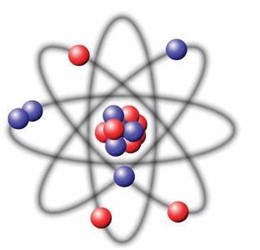Forces Between Atomic Nucleus And Electron In Focus

Precision measurement in heavy ions deviates strongly from predictions
For the first time, a team led by the TU Darmstadt succeeded in measuring the transition between energy levels with lasers so that underlying theories can be tested with lithium-ionic ions of the Bismuth element, with a surprising result, which researchers now use in Nature Communications "The previous understanding of the interplay between the electron and the atomic nucleus could be erroneous.
On the surface of atomic nuclei of the element bismuth, magnetic fields exist in a strength as otherwise only on the surface of huge neutron stars. The behavior of electrons in these fields is investigated by a research group headed by the Technical University of Darmstadt . It was only recently that a breakthrough was made with the first observation of a special transition in lithium-like ions of this element.
Now she was able to measure this transition at the GSI Helmholtzzentrum für Schwerionenforschung in Darmstadt so precisely that for the first time a meaningful test of the underlying theory became possible. In the latest issue of the journal "Nature Communications" the scientists report on the surprising result: the discrepancy between theory and experiment is striking. It points to a mistake in the understanding of the interplay of the electron with the complicated inner structure of the nucleus.
Simple atoms, consisting only of one nucleus and one or few electrons, are ideal systems to test our understanding of the basic physical forces. The theory of the atomic shell, based on quantum electrodynamics (QED), is much better understood than the structure of the atomic nucleus. The QED allows to calculate the properties of the electrons and the states in which the atom can exist with high accuracy. These calculations are then checked in precision measurements. So far, the QED has mastered all these tests with flying colors.
When using heavy nuclei, the researchers are primarily interested in the influence of the gigantic electric and magnetic field strengths on the electrons bound in them. Under these extreme conditions, there have been very few experimental investigations of the theory, and they are far from having the high accuracy obtained with light nuclei. The strong fields make the theoretical calculations much more complicated. In addition, the complex internal structure of the nuclei is not sufficiently accurately known, but has a great influence on the atomic shell.
To overcome this difficulty, theorists calculate certain differences for systems with different electron numbers but identical nuclei. These so-called "specific differences" are such that the contributions of the core structure should be almost exactly eliminated and served as a starting point for the scientists to examine the QED calculations more closely. Instead, the results published now seem to question the concept of the specific difference.
Research at the experimental storage ring (ESR)
In his experiment, the team first produced hydrogen- and lithium-like bismuths. These ions are fired into the experimental storage ring (ESR) at the GSI accelerator facility, which has a circumference of 108 meters and has two straight sections in which experiments can be carried out. In one, an electron beam of defined energy is superimposed on the ion beam. After a few seconds the velocity of the ions is equal to the velocity of the electrons. In this section, a pulsed laser beam is additionally superimposed on the ion beam. The wavelength of the laser is then changed in minute steps. When the laser reaches exactly the wavelength of the transition to the ion to be investigated, the ions absorb light (photons) and thus energy from the laser beam.
The efficient detection of this small number of photons was achieved with a special mirror and single photon detection system developed at the University of Münster. Due to the high speed, the wavelength of the laser for the ions is compressed or stretched by a factor of about 2.4, depending on which direction the laser is irradiated. This factor depends on the acceleration voltage of the electrons. For precise measurement of this high voltage of about 214,000 volts with an accuracy of about one volt, a high voltage divider developed at PTB Braunschweig was used. Scientists at the TU Darmstadt were, among other things, responsible for data collection,
The measured specific difference of the transition wavelengths in hydrogen-like and lithium-like bismuth can not be reconciled with the theoretical prediction even after consideration of all known systematic error sources. The reason for this deviation is currently unknown and should be checked in other measurements on other isotopes of the bismuth. These isotopes, however, are radioactive and therefore have to be produced before entering the storage ring. These options are available at the GSI Helmholtz Center. At the new accelerator center FAIR , which will begin construction in Darmstadt shortly, new possibilities for further investigation of this observation will emerge.
Source: Technische Universität Darmstadt
